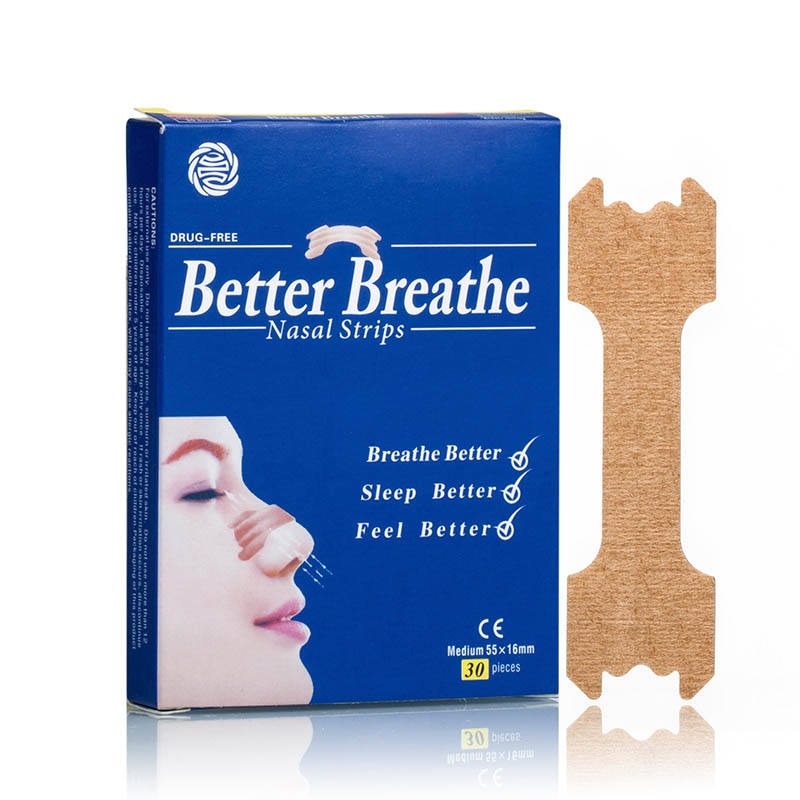Author:Kangdi 11-09-2023
Ventilation nasal strips are designed to help individuals breathe easier, especially during sleep or when experiencing nasal congestion. Here are two reasons why these strips can be effective in improving airflow:
01. Nasal Dilatation:
Ventilation nasal strips work by physically widening the nostrils. They typically have a spring-like, flexible band embedded in an adhesive strip. When applied to the outside of the nose, the strip gently pulls open the nostrils, which can help increase the internal diameter of the nasal passages.
This widening of the nostrils, known as nasal dilatation, can counteract the collapse or narrowing of the nasal passages that can occur during sleep or due to congestion. It allows for improved airflow through the nasal passages, making it easier to breathe through the nose.
02. Reduced Nasal Resistance:
Nasal congestion or other obstructions in the nasal passages can increase nasal resistance, making it more challenging to inhale and exhale through the nose. Ventilation nasal strips help reduce this resistance by keeping the nostrils open.
By lowering nasal resistance, these strips make it easier for air to flow in and out of the nasal passages. This can be particularly beneficial for individuals who have difficulty breathing through their noses due to conditions like allergies, deviated septum, or simple nighttime congestion.
While ventilation nasal strips can be effective in improving nasal airflow and making breathing easier, they may not be suitable for everyone. Individuals with certain medical conditions or specific nasal anatomical issues should consult with a healthcare provider before using these strips. Additionally, while ventilation nasal strips can provide temporary relief, addressing the underlying causes of nasal congestion or breathing difficulties is essential for long-term respiratory health.
 0086 19937104978
0086 19937104978





